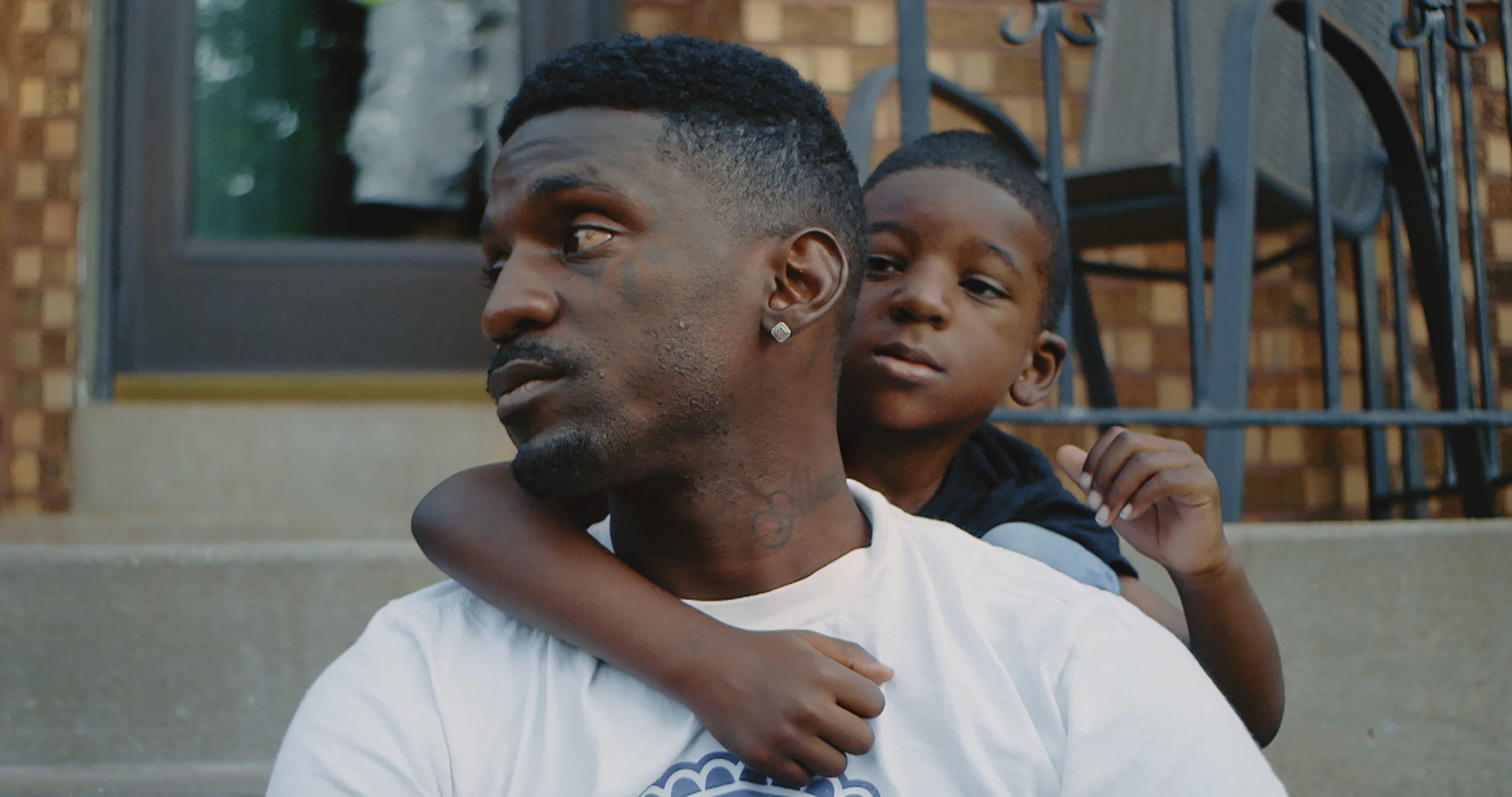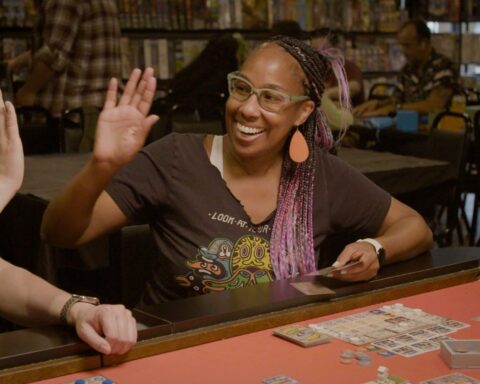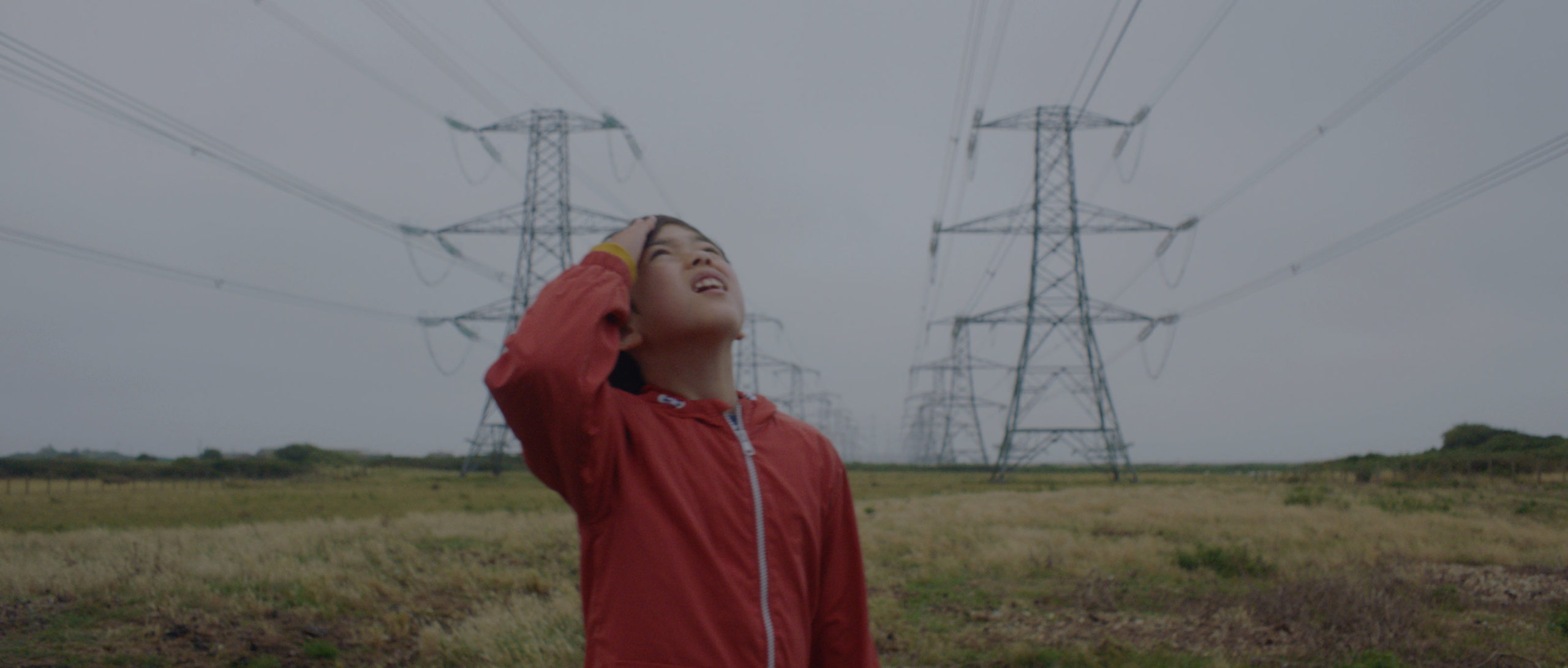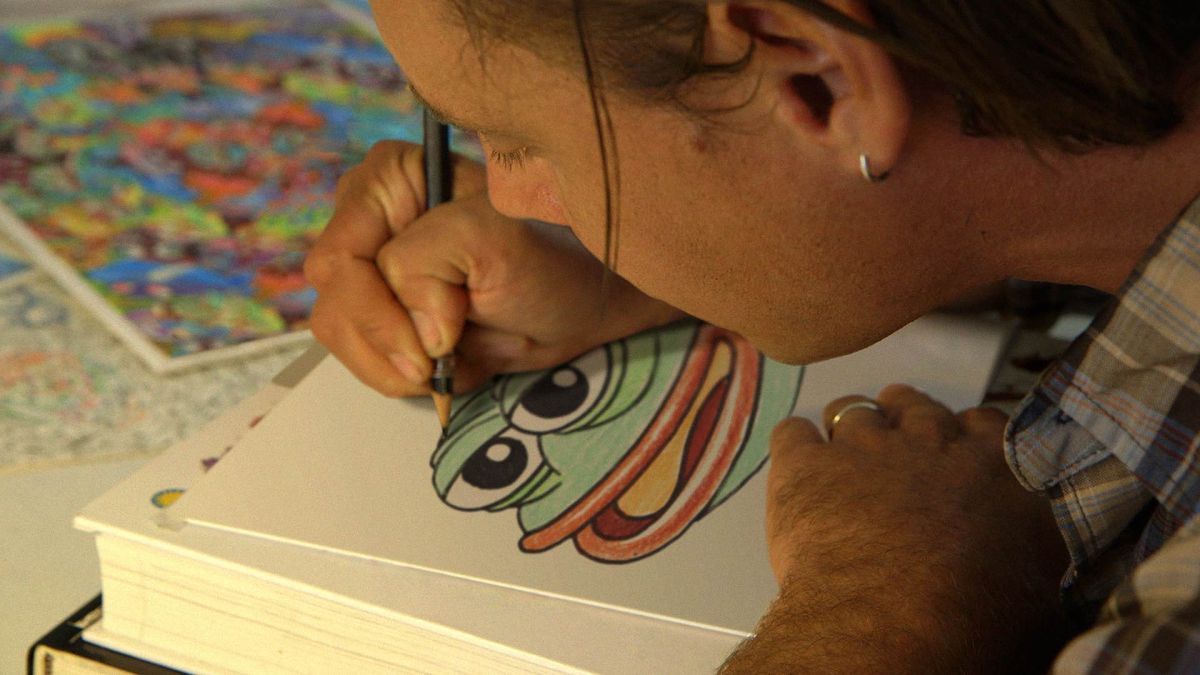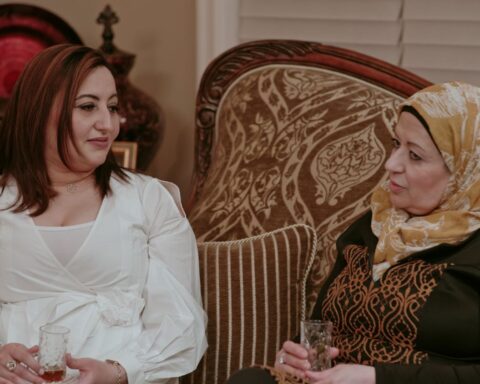Canada has a true underdog story in this year’s Oscar race. Toronto-based director Sami Khan is one of the talents nominated for the extraordinary short documentary St. Louis Superman. Directed with Smriti Mundhra, St. Louis Superman was among the names called on January 13 even though many Oscar pundits said the odds were against it.
For anyone who followed St. Louis Superman on the festival circuit, though, this come-from-behind victory was no surprise. The festival favourite set Hot Docs on fire last year where it debuted at number one in the audience award rankings and ultimately won the prize as the festival favourite in the shorts category. It’s an inspiring portrait of an everyday hero, the first in a wave of grassroots activists turned politicians, fighting to reclaim democracy from Trump’s America.
Khan and Mundrha’s film offers a true underdog story with its moving portrait of Bruce Franks, Jr. St. Louis Superman follows Franks as he brings his activist spirit, honed on the streets of Ferguson, Missouri in the thick of the Black Lives Matter movement, to the House of Representatives. In Franks, St. Louis Superman offers an intimate and up-close character study of the personal toll that violence takes, as well as the collective trauma communities experience in the aftermath of tragedy. It’s also a necessary portrait of a broken system in need of repair as the film observes Franks struggle while passing a bill recognizing the violence that communities like Ferguson face as a health epidemic. For Khan, who previously directed the feature drama Khoya and several dramatic shorts, this auspicious documentary debut shows a strong eye for character and an ability to see the larger picture within one person’s story.
POV sat down with Khan in Toronto to discuss his experience with St. Louis Superman and to congratulate him on the well-deserved Oscar nomination.
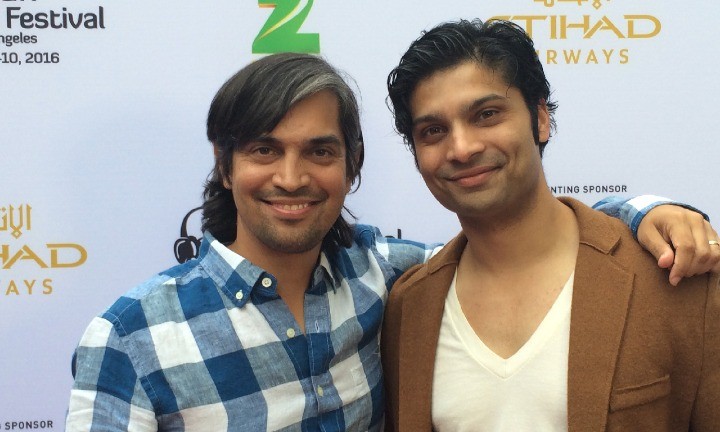
POV: Pat Mullen
SK: Sami Khan
This interview has been edited for brevity and clarity.
POV: How does a filmmaker from Sarnia end up in St. Louis making a film about Bruce Franks?
SK: We were commissioned to make the documentary, which is fortunate for a short documentary to be commissioned and have the budget mostly upfront. Poh Si Teng, a producer at AJ Witness, approached Smriti Mundhra after she’d seen A Suitable Girl, Smriti’s 2017 feature doc, which won a prize at Tribeca. Smriti and I were working in India at the same time and started sharing battle wounds and war stories. She forwarded the email almost immediately, and then we started talking about what that film could be. This was in fall of 2017 and AJ Witness wanted something around the 2018 midterm elections in the U.S. I was living in the U.S. and looking at what this first pushback to Trump would be. Black Lives Matter was still recent and those activists were starting to make the jump into electoral politics.
We first looked at Obama districts that had gone for Trump. But it felt like those stories would be dated in four years, even four months. Then Smriti found Bruce’s story. We were like, “That’s the one. That’s a story that is not only relevant now, but will be relevant in 20 years.” Bruce has a profound emotional and existential journey. He’s almost like a mythic Joseph Campbell figure on his quest.
POV: If you attend documentary workshops or industry sessions, the question that always comes up is, “Who’s your character?” You’ve done a lot of dramatic work, so to what extent does the focus on the character change from a doc to a drama?
SK: What’s ingrained in me is the idea of story. You have to tell a story and you can do it circularly or you can play with that and have it be flat. That idea of story is what a film is. That’s where a film comes from whether it is documentary or fiction. Smriti thinks the same way. That framework freed us up to play with these deeper emotional, psychological issues.
POV: I love how the film integrates the battle rap scenes. I would never have made the parallel between the different aspects of Bruce’s life until he made the comment about how battle rap is like being on the floor of the House of Representatives. Everything clicked then. Can you talk about the structure and incorporating the battle rap into the film?
SK: The work was really in the sequencing of the scenes. When we were shooting, the work was in building trust and intimacy with Bruce. He was incredibly trusting and open right off the bat. There were variations of the battle scene where it played more like a montage. For example, the emotional breakdown sequence where Bruce talks about profound emotions. No verité scene can articulate those feelings. The battle rap worked as this kind of moment because we used the framework of the bill’s passage. [Bruce proposes a bill to recognize gun violence against youths as a health epidemic]. But that’s not what the film is about.
The battle rap was Bruce’s victory, like the hero defeating the dragon. So that meant figuring where it would go. We put it around the 14-minute mark and took him to a deeper place. Then we go to the mom. I love the counterpoint between like the battle rap to the mom the next day.
POV: It really surprised me that Bruce had to defend himself to his own community in the battle rap scene. What does that say when activists have to prove that they still have integrity while trying to work within the system to inspire change?
SK: Bruce has the line in the film early on that says, “The system wasn’t built for us.” He realizes that, but many people from his community don’t. He has difficulties with the system, whether he falls outside the lines of what an establishment candidate or politician would do, then he gets pushed back and that’s ultimately why he left electoral politics. He plays by his own rules so he has to deal with a lot of negativity. Even though the battle rap community is an intense space and, in the moment, someone is trying to take him down and beat him, the battle rap community is much more supportive than the political space. Just look at Bruce’s Twitter feed and see how the battle rap community is so thrilled with the Oscar nomination.
POV: This film marks your first time as the cinematographer. Can you talk with that choice?
{image_2} *SK:* Part of it is practicality since the budget of this film was small. But that aspect gave us the blessing of intimacy. Some of the scenes were just Bruce, Smriti and I in a room, and the camera’s pretty small. We just had the shotgun mic and maybe Bruce’s lav, but it’s a credit to some of my friends who are cinematographers.
SK: Part of it is practicality since the budget of this film was small. But that aspect gave us the blessing of intimacy. Some of the scenes were just Bruce, Smriti and I in a room, and the camera’s pretty small. We just had the shotgun mic and maybe Bruce’s lav, but it’s a credit to some of my friends who are cinematographers.
We’re finishing a feature doc about three Cuban baseball players [called The Last Out]. Over nearly six years spent making that film, we honed this approach to verité. Migration is a big part of that story and journey, so in one scene, my partner on the project was on a bus crossing a border—with intimate productions like that, you learn to use small cameras instead of these big rigs. Bruce calls them Ghostbusters rigs.
There’s been huge technological change in the last few years. I think the Syria documentaries especially prove that, like Matthew Heineman’s films, like City of Ghosts, or [Waad al-Kateab and Edward Watts’] For Sama is shot so intimately. If you watch Feras Fayyad’s film [ The Cave ], you see how you just need a small camera. You can figure out the aesthetics. I credit my friends who were cinematographers and helped us build this intimate look. The film was shot on fixed lenses, so hardly any zooms were used in the film, or none that I shot. When we were talking to Bruce, I wanted to be in his face and right next to him. In order to do that, Bruce had to trust me and let me in.
POV: What made Bruce say yes to the project?
SK: I think it was our track record. He had some bad experiences with film crews or crews from national news organizations and national digital organizations. I think their approach is like a multinational mining company. Some people make documentary films by going in to extract the story. They don’t care what’s going to happen to the person you’re working with to tell their story. Smriti pitched him on the idea that we were outsiders. We were there to work with him to tell his story. We weren’t there to just fly in and fly out with his story.
POV: How did Bruce’s decision to step back from politics affect the film or affect you?
SK: We weren’t there to put a bow on a story. Early on, we were talking about his struggles with mental health. One fortunate connection was my wife, who is a psychiatric social worker. One of her best friends was living in St. Louis at the time and working in criminal justice reform and social work. She was a friend of Bruce. We stayed at her house, so mental health and trauma were part of the conversation from early on. We wanted to make sure that there wasn’t a one-dimensional victory at the end. We wanted viewers to sense the cost Bruce felt taking on his journey. That’s also a credit to Sheila Nevins because the film was done when Bruce made the decision to step back. We were already starting to get interest and offers. We had won a prize at Big Sky and then got the acceptance to Tribeca. That was important for Sheila coming on board. She helped us sculpt that ending to make sure it was true to Bruce’s experience.
POV: How did she Sheila Nevins get involved? She’s a force in the doc world.
SK: She was on one of the juries at Tribeca last year. We were in competition and then she saw the film, but the problem was that somebody else owned the film. The filmmakers didn’t own the film because we were commissioned to make it. So, it wasn’t a matter of Sheila calling Smriti and I and saying she wanted to buy it.
She had to talk to Witness and Poh Si Teng. Poh and Sheila sat down and hashed out a deal. Sheila wasn’t taking no for an answer. She fought for the film. Without Sheila, we wouldn’t be where we are now. She knows what she’s doing.
POV: I also understand that you have a two-year-old daughter. How has making this documentary shaped your perspective as a parent?
SK: Right before the rally at the end, Bruce talks about how he doesn’t want to mislead King, his son, about the world and the challenges King is going to face as an African American boy in 21st Century America. The way Bruce is able to do that with his kids, and with such compassion, he gives them the rhetorical skills to fight back. Brooke, his daughter who you see playing video games on her iPad in the background, made a statement against the pledge of allegiance. King is six and a half and he’s asking questions and putting teachers on the spot.
Bruce taught me about being real with your kids, but then also being compassionate and giving them the skills to support themselves. Bruce also knows that his kids have it a little bit easier than he did. Bruce had a tough upbringing, especially losing his brother. [The film features Bruce’s experience as a child losing his older brother to gun violence.] His kids are still only as secure as an African American boy can be in Trump’s America, but that’s more secure than he was.
POV: How was the experience of making this film and then seeing Trumpism cross the border and the same toxic politics come out of hiding in the previous Canadian election?
SK: I think this storm is still gathering in Canada and that the center progressive alliance dodged a bullet in the last election. They might not yet realize that in Parliament Hill. But the Conservatives got more votes than either of the liberal parties did. Massive demographic changes are happening in Canada. We need to be real about that. For people of a progressive mindset, we need to figure out how are we going to build a sustainable alliance that is going to defeat the forces of fascism, which are on the march across the world. Canada isn’t immune. Look at Rebel Media. Some of the most successful Canadian personalities on social media are fascists.
POV: And one ran for mayor of Toronto!
SK: One of our chief cultural exports right now is fascism, so we’re not immune to it. You also have to look at how the government has gone back on some promises, like with the First Nations. Cosmetic liberalism only goes so far. I think that’s what Trump’s election showed in the U.S. – Obama was able to hold this coalition together because he’s one of the greatest politicians the world has seen. It can cover up problems that are festering on the surface, like growing inequality. Obama can tell a story, but there’s nobody in Canada on the horizon who I see doing that.
POV: Although one thing in the film that gives me hope is the idea of everyday heroes. Who are the Bruces in your life or the Bruces that you see in your community?
SK: My wife is a psychiatric social worker, so she deals with abuse with trauma every day. She’s also been raising a two-year-old when I’m traveling so much and pushing this film. She’s the biggest superhero in my life and I’ve been especially fortunate to have her the last two years.
There is also a fiction TV show coming out that I’ve been working on, which is about a Syrian refugee who becomes a doctor in a Toronto emergency room. I’m helping them shoot behind the scenes documentary footage and that told me the story of Khaled Almilaji. He’s a doctor by training. When the protest broke out in 2011 in Syria, he changed his life and started pushing back and protesting against Assad. He used his training as a doctor to build a public health infrastructure to step into the vacuum that had been destroyed. He’s a superhero living in our midst in Toronto.
St. Louis Superman screens as part of the Oscar-nominated Documentary Shorts programme playing at select theatres including TIFF Bell Lightbox beginning Jan. 31 and Hot Docs Ted Rogers Cinema beginning Feb. 7.




